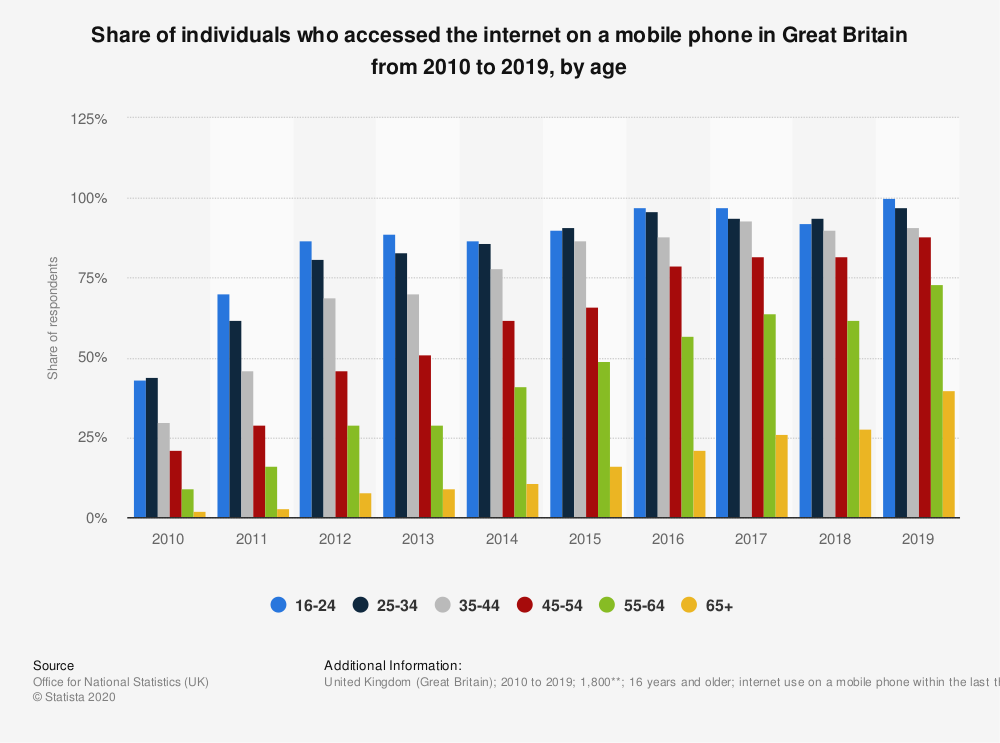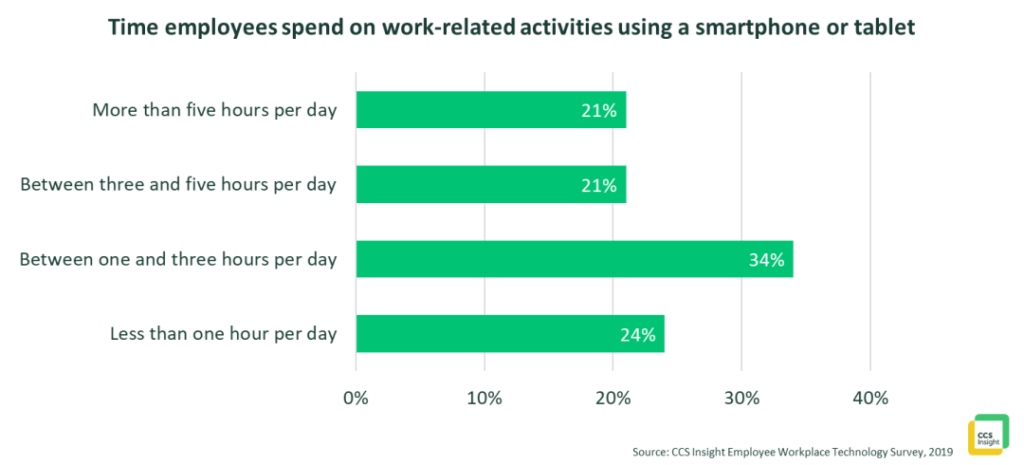IT departments have experienced countless changes in the way they manage and control users’ devices. From traditional CRT monitor-based computers to modern smartphones, the technological developments have been remarkable. In addition, during the COVID-19 pandemic, employees were restricted to working from home, making IT management routines challenging for system administrators. Nevertheless, devices and users must remain secure, and companies are quickly adopting modern management approaches to secure their remote workers.
Caring for remote workers started with enterprise mobility management (EMM), moved into unified endpoint management (UEM) and has evolved into modern management. In this blog, learn more about modern management, its importance, how it simplifies enterprise IT management, market analysis and its benefits.
What is modern management?
Modern management, also called modern endpoint management, is the process for managing legacy and modern applications in a unified way by providing IT departments with greater visibility, security and awareness. Transformational connectivity, which enables full-time employees and contract workers to work on the go regardless of their devices or platforms, is also a critical component of modern management.
The goal of modern management is to transform enterprise IT security management and the end-user experience, making it more accessible, reliable and secure.
Why is modern management a game changer for your business?
With the evolution of technology, new hardware and software come onto the market every year. Devices such as Chromebooks, IoTs, smartphones and kiosk devices require mobile device management approaches, while devices such as servers and desktop computers require traditional PC management tools. Similarly, some devices use legacy applications, while others use modern applications, such as custom business apps on smartphones. In addition, the variety of user types, including full-time, part-time, contract, partner and seasonal users, has made IT routines difficult for system administrators.
This complex environment has made IT management routines necessary for system administrators, especially with the different types of devices and applications in the workplace. A unified modern approach to endpoint management untangles the ecosystem by enabling administrators to manage, control and secure all complex devices, applications and user access through one workflow and displayed on one console.
The chart below from Statista shows the breakdown by individual age groups of those who accessed the Internet on a cell phone in Britain from 2010-2019. This graph clearly shows the increase in cell phone use.

Here’s another metric from CSS Insight that shows employees’ time use of different devices.

The above statistics for a contemporary workplace show why such an approach to unified endpoint management is vital for enterprises.
Evolution of modern management
IT management began with physical troubleshooting of computers and then became known as traditional PC management. The embrace of client management tools (CMT), installing an agent on the network to monitor activity, increased IT productivity. Later, the introduction of enterprise mobility management (EMM) enabled IT to manage roaming users, further improving productivity and security. Recently, EMM and CMT have evolved together into unified endpoint management (UEM) that allows IT administrators to manage, secure and control devices regardless of location, platform and device model from a single console.
UEM has taken IT security management to a new level, and most enterprises worldwide are adopting this IT management approach. Now, however, another evolution will motivate IT departments to manage, secure, control and audit devices, users and applications from a single console without individual configuration. This new approach that brings security and management together is called “modern management.”
Looking at it another way, as in the image below, people used to use horses to move from one place to another, which was similar to our physical IT management routines. Later, people combined horses and carriages to pull larger loads more efficiently, which was similar to traditional PC management. Then came engineers, who built cars for faster and more convenient transportation; as did EMM, which provides simple but efficient remote management of mobile devices. The development of trains and steam engines made transporting people simple, reliable and efficient, as did the unified endpoint management approach. Now modern management is more like an airplane, making everything even more efficient, reliable, faster, more stable, simpler and comfortable, regardless of the load. Cross-border and around-the-clock, modern management is a boon for enterprise IT management.

Anatomy of modern management
Modern management is a combination of different devices, platforms and users as shown in the image below. Moreover, this modern endpoint management is only possible if the fundamentals of UEM are present in the enterprise.

Four key benefits of modern management
Users and system administrators benefit from this approach
Modern management provides users with a modern workplace so they can work seamlessly across devices, with the utmost security and safety, and from any location. Meanwhile, sysadmins can experience a common, reliable and consistent procedure to manage, secure and enable users across devices and platforms with the utmost simplicity. Both users and sysadmins benefit from secure, hassle-free management.
Saves time and effort for system administrators
System administrators and other IT technicians must always prioritize their tasks to achieve maximum productivity. With modern endpoint management, most of their tasks can be automated, reducing their involvement unless it is a unique scenario. With a cloud-based approach, device management and security is achievable. Based on the type of business activities, a system administrator can prioritize their tasks by studying current deployments and data points, providing administrators with essential data to make informed and rational infrastructure decisions.
Enhanced end-user experience
Users have increasingly high expectations for device startup time, quick launch of apps and better communication capabilities through their smartphones. Paradoxically, their desktop computers may not be as efficient as their mobile devices because of localized software, boot time, platform-specific complications, outdated firmware and hardware limitations.
With this modern endpoint management, every device to which the user has access is updated and equipped with business-oriented applications, and startup errors or other problems are immediately resolved using remote troubleshooting capabilities. Modern endpoint management also enables administrators and users to resolve problems quickly, allowing work to resume quickly. All of these simplified but efficient approaches improve the overall end-user experience.
Increases security
With a unified console, system administrators can access a variety of endpoint security protocols, including patch management, vulnerability management, browser security management, software blacklisting and whitelisting, USB security management, zero-trust security, automated endpoint health monitoring, email and content security, port security and more.
The ability to provision and register devices, distribute applications and configurations, update applications, secure and remotely manage IT assets provides strong device and data security across the network, making this approach an efficient and reliable approach to enterprise IT management.
Market analysis of modern management
Since modern management falls under the UEM category, it is important to look at the existing market, the players and their position in the quadrants.
With the launch of Microsoft’s Endpoint Manager, modern management will supplant endpoint management. The image below shows different perspectives on the UEM market from different analysts. To make a rational decision, it is best for IT managers to know the players, their capabilities and where vendors stand with their transition to modern management.

Modern management from ManageEngine
ManageEngine has already proven its efficiency and scalability in the UEM domain in recent years with its industry-recognized endpoint management solution Endpoint Central, and is now embracing modern management methods. With the transition of Endpoint Central and the addition of additional modern management capabilities, it will continue to meet the evolving needs of endpoint management solutions.
Learn more about Endpoint Central’s modern management capabilities using these resources:


